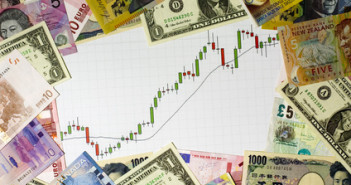By Alex Edwards at UKForex, an international money transfer service.
The pound pushed higher throughout this week, closing near to 1.67 on Friday. The push started on Tuesday in the run up to Fed Chair Janet Yellen’s first testimony before the U.S. House Committee. She indicated that the Fed would continue with its tapering program, despite the recent run of poor U.S. payrolls data.
She added that it was important to take time to assess the significance of a broader range of data and an additional set of payrolls figures come the next meeting in March. Yellen also made it clear that the issues facing emerging markets made no difference to the future path of tapering, and went on to stress that interest rates would remain low for an extended period of time, once and if the unemployment rate fell below the Fed’s threshold. This as well as an improving risk environment saw the USD trade lower.
On Wednesday, GBP/USD broke through 1.65 following the publication of the Bank of England’s Inflation Report. Growth forecasts were upgraded but Governor Carney was dovish on interest rates. He said that rates are to remain low and that there remains scope to absorb spare capacity in the economy to avoid having to raise the base rate any time soon.
He was also fairly vague with regards to forward guidance, and said that a decision to raise rates would be dependent on wider economic indicators, not just unemployment. Nonetheless, GBP/USD traded higher, reacting positively to news of merger and acquisition activity, specifically the Vodafone/Verizon deal and weak U.S. retail sales data on Thursday. The pair was further buoyed by the release of positive GDP data from Europe and went on to trigger stops close to and around 1.67.
Talk of negative interest rates in Europe, and in particular comments from ECB official Coeure, saw the euro lose ground vs. the pound this week. He said that the central bank was “seriously†considering cutting overnight deposit rates to negative.
Both AUD and NZD made good gains throughout the week, supported in the whole by strong data from China.  Trade data showed that China’s trade surplus bulged in January to $31.9 billion (vs. expectations for $24.2 billion) and although the data is notoriously difficult to interpret, it provided a big boost to the commodity-linked currencies . Chinese CPI also printed stronger than market forecasts on Friday.
Next week, we look to BoE Meeting Minutes and the UK unemployment rate, perhaps less relevant to the market these days given the change to the central bank’s forward guidance. U.S. FOMC Meeting Minutes are also due. Along with CPI, they will be a key focus for investors.
Further reading: Forex Weekly Outlook



